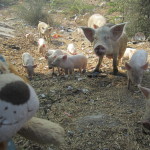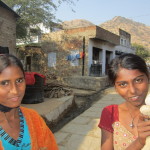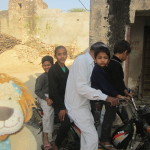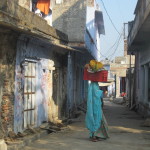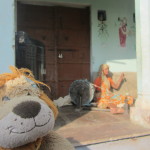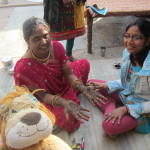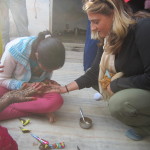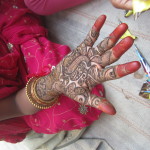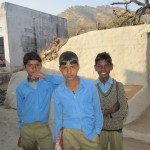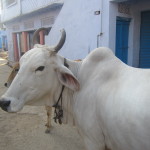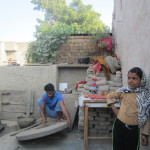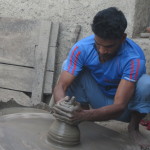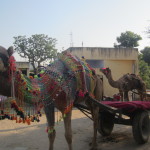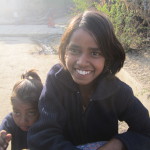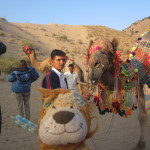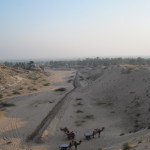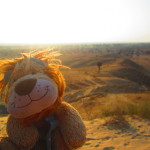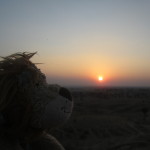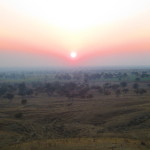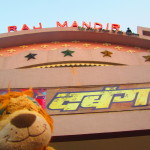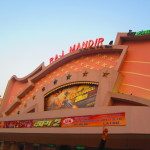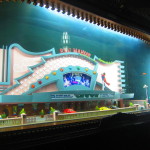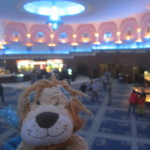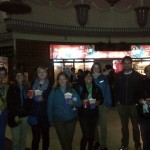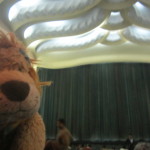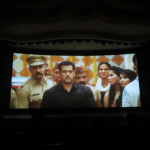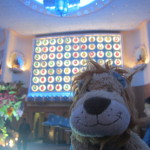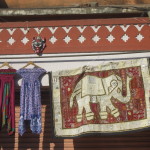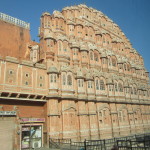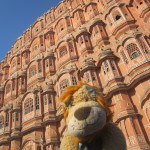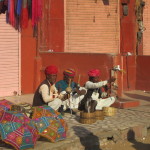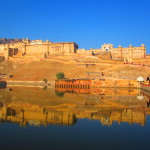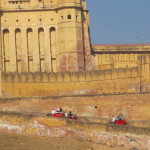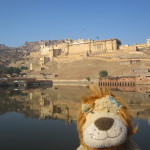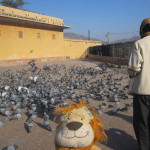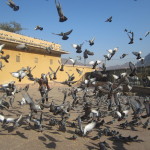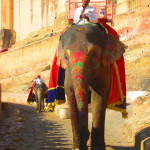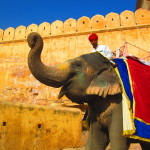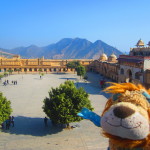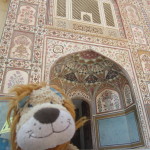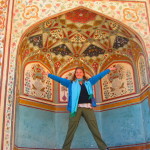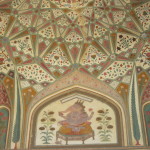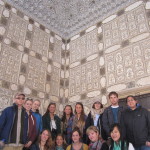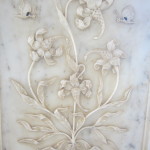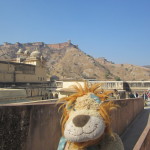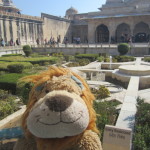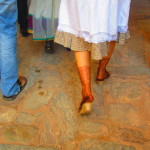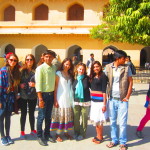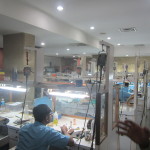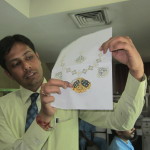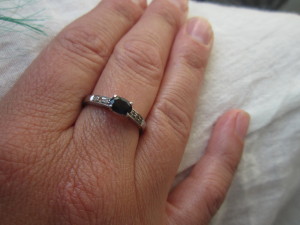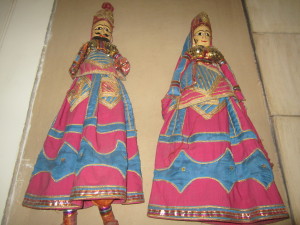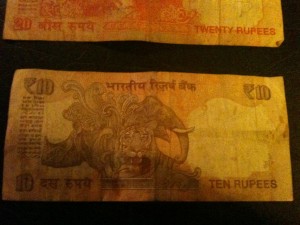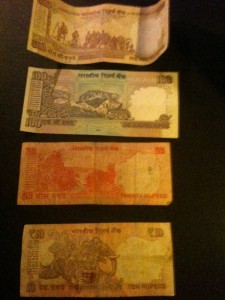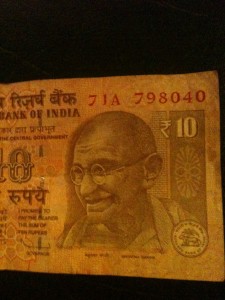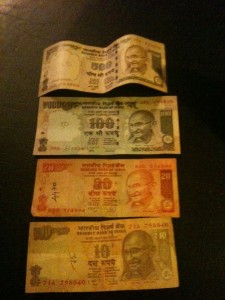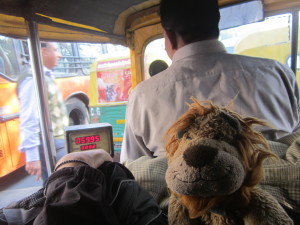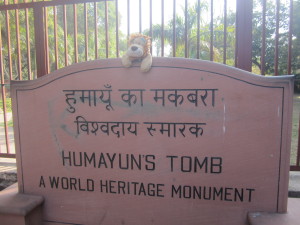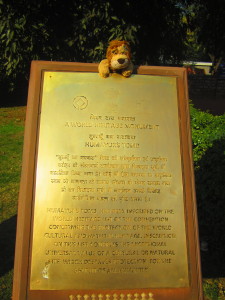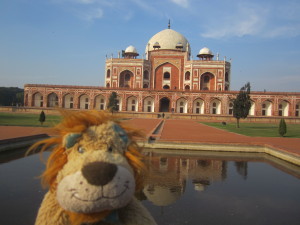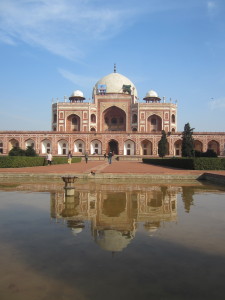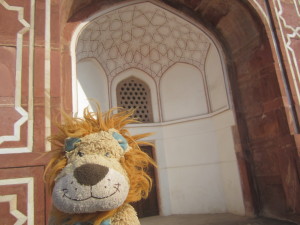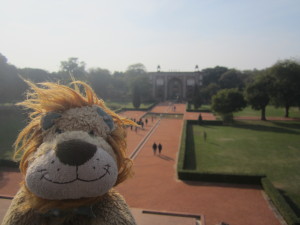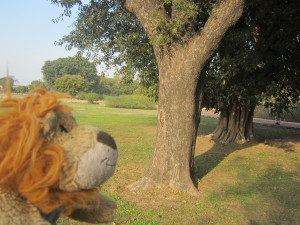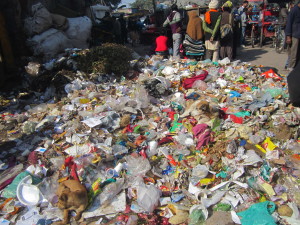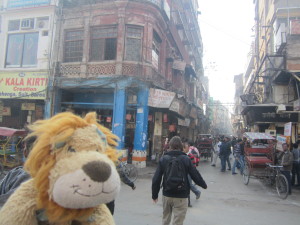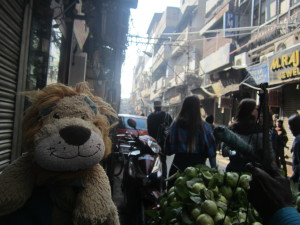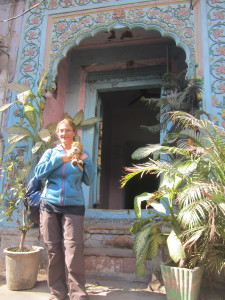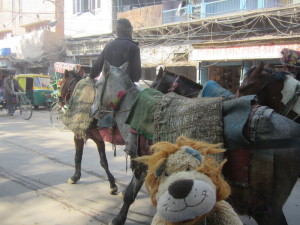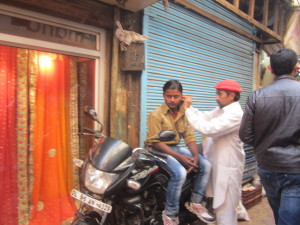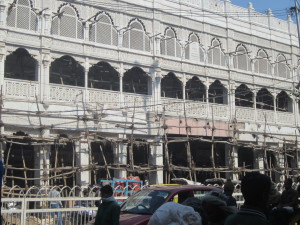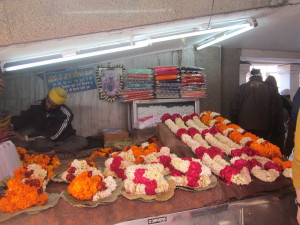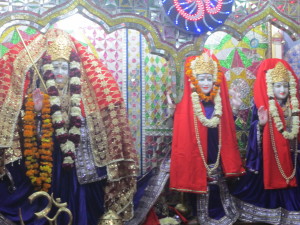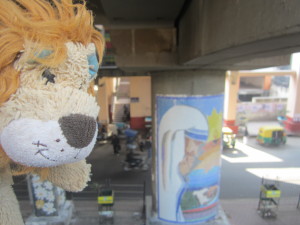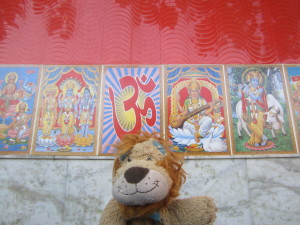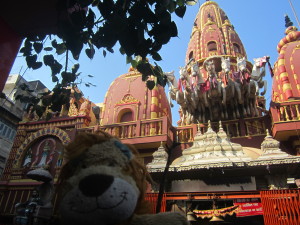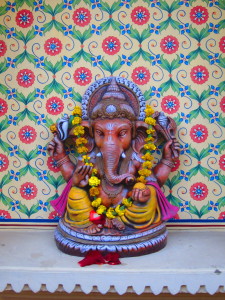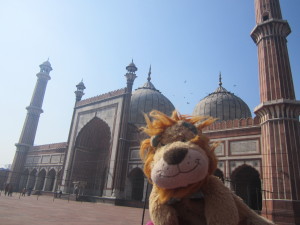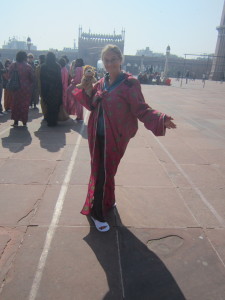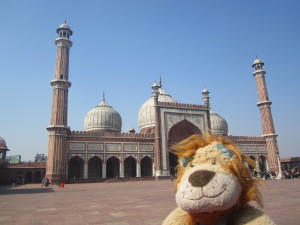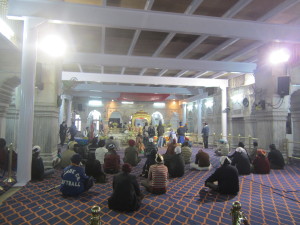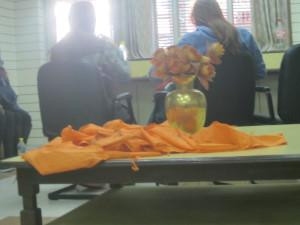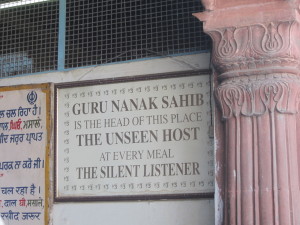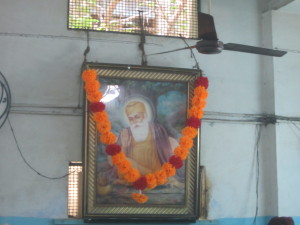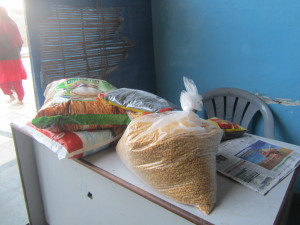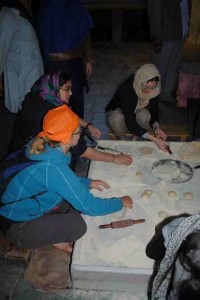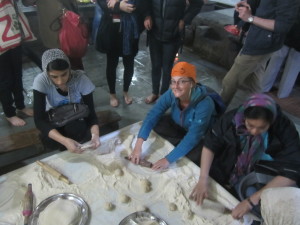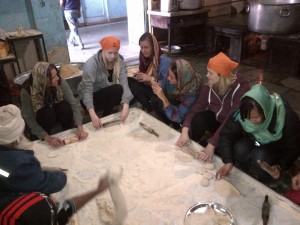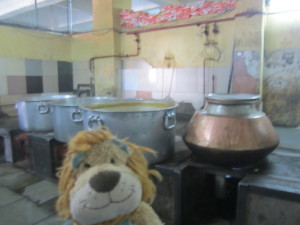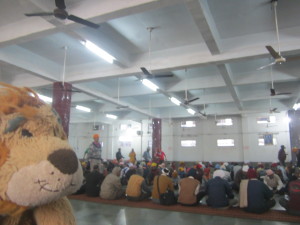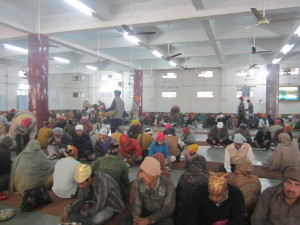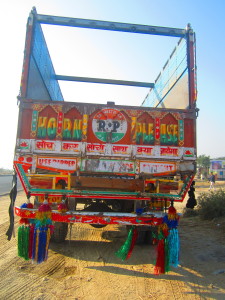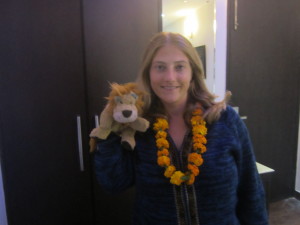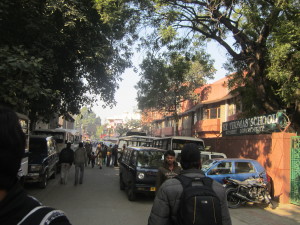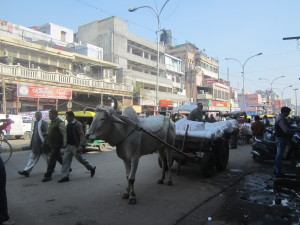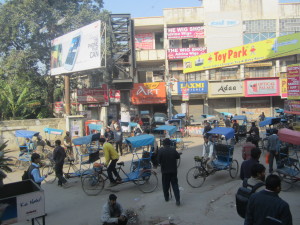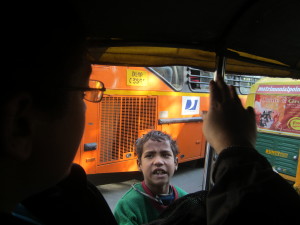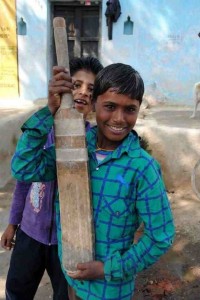- Lewis greets a family of pigs by the roadside
- Another garland greeting
- Children wash their pots in the street tap
- The Tordi villagers love Lewis the Lion!
- 5 on a bike? Lewis the Lion can’t believe it!
- A villager carries a basket on her head
- A woman spinning cotton
- Lewis the Lion watches the woman at her spindle
- Lewis is in luck as he descends on a wedding henna party!
- Helen is invited to have her hand painted with henna
- Beautiful henna for the bride
- Teenage boys returning from school
- Lewis meets his first sacred cow
- In the potter’s home
- A potter at his wheel
- The camel carts
- Excited children chase the camel cart
- Lewis the Lion poses with a camel
- The camel carts wait while their passengers climb the sand dunes
- Lewis basks in the glorious twilight, overlooking Tordi
- A huge moon rises above the fortress
- Lewis contemplates another magnificent day on his journey
- A wondrous sunset over Tordi
Leaving Jaipur, the journey took the group about four hours along a mainly bumpy road. They stopped briefly to see a family of pigs by the roadside. Lewis the Lion thought the piglets were very cute and funny indeed! The journey was worth it as when Lewis the Lion arrived in the small, Rajasthan village of Tordi he felt that he was truly seeing the “true India” or at least that’s how he imagined it to have been. He loved the accommodation which was a former palace of the landowners. Again, Helen was welcomed with a flower garland of yellow and orange carnations and blessed with a bindi placed on her forehead. Lewis the Lion had seen a lot of people in India with this ‘dot’ on their forehead and wanted to know a little bit more. So, Dushyant explained to him that a ‘bindi’ on a woman’s forehead or a ’tilak’ on a man’s forehead, in India, signifies the individual’s spiritual eye. This spiritual eye is also called the ‘third eye.’ Hindus believe that this third eye is used for spiritual sight; that you can see everything with that cannot be seen through the two physical eyes.
The group then went on an orientation walk through the village. Lewis the Lion loved meeting the children and villagers who had never met a cuddly lion before! They were very happy to have their photos taken and Lewis thought that there was a wonderful innocence, unlike when he tried to photograph the villagers in Bolivia who then asked for money!
Lewis the Lion was warmed to the core by the hospitality of these strangers. As they were passing a house, the door was ajar and women were painting each others’ hands with henna (or mehndi as it is called in Hindi) as part of a wedding celebration. They welcomed the guests in to see and then before Helen knew it, they were also decorating her right hand with a beautiful swirling flower: how kind!
The group then saw some traditional crafts at work. A woman was sat on her doorstep spinning cotton and then a potter welcomed the group into the yard where he showed them how he made ceramics on his wheel. Watching some of the others in the group, he realised how difficult it was even though the potter made it look easy!
It was then time for the group to head back to their accommodation where another treat lay in store for them. They were going to go camel carting through the town. As they passed by, excited children chased them and villagers greeted them by saying, “Namaste” and Lewis felt that this was a very friendly place to welcome strangers in this way. The camels stopped at some huge sand dunes. Lewis the Lion then had to take big strides up the sandy hill ready to see the sunset. His friends drank masala tea and played charades – what a wonderful way to spend the evening and watch the sun set over the Tordi countryside.
However, the day wasn’t quite over yet, as Lewis the Lion then joined his friends for dinner up on the roof top and they sat and talked around a campfire. They discussed what their favourite books and films were. Lewis loved a bit of book-talk and really couldn’t decide what his favourite book was or film was, he read and seen so many good ones! Perhaps for books it was the Alchemist by Paulo Coelho because it talked about following your dreams which is what he was doing now.
Do you have a favourite book or film? What is it and why?

